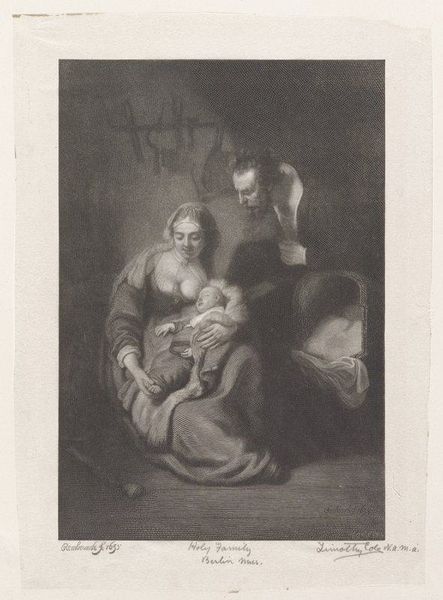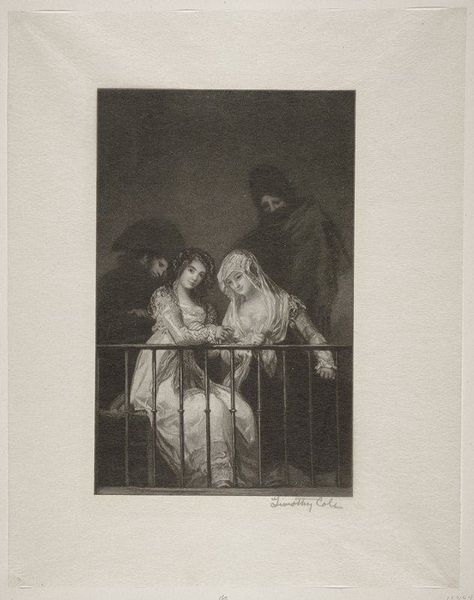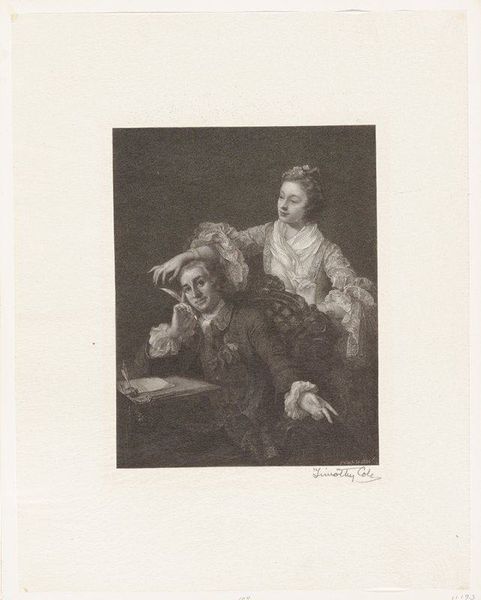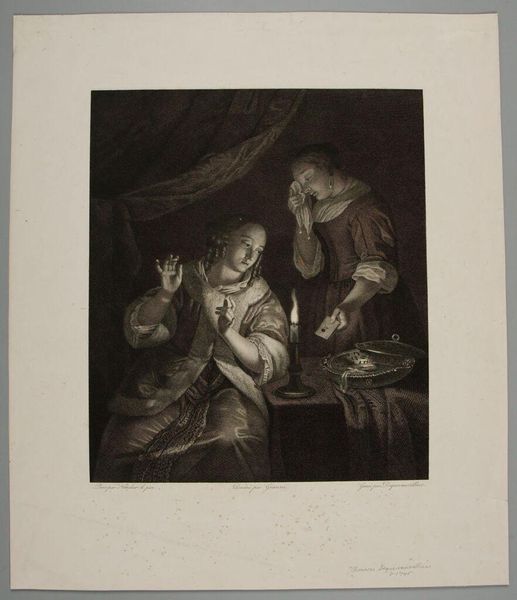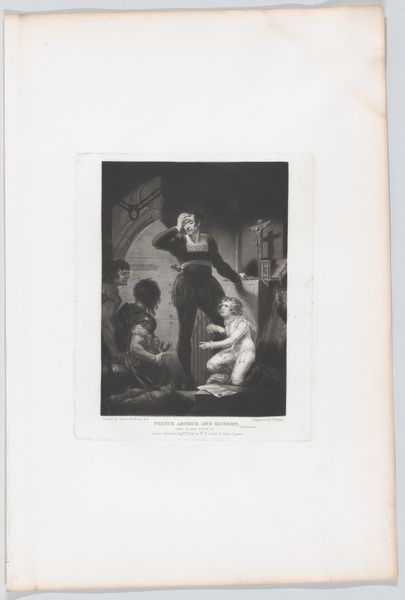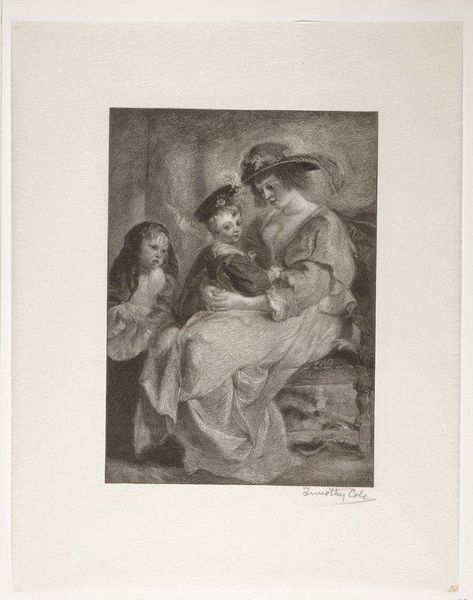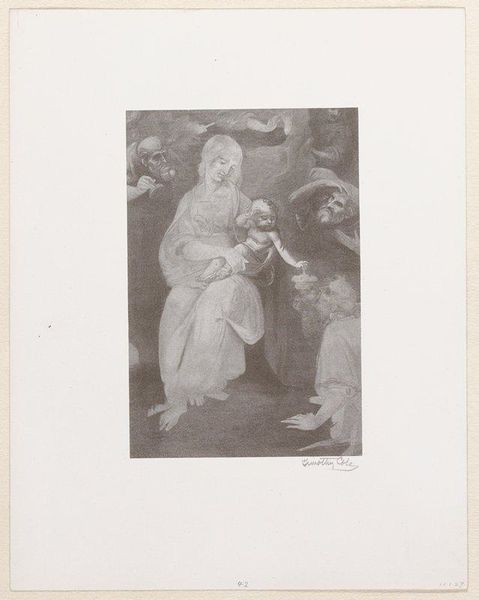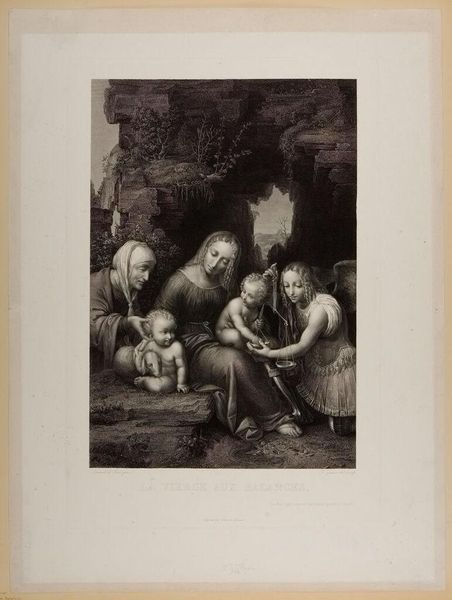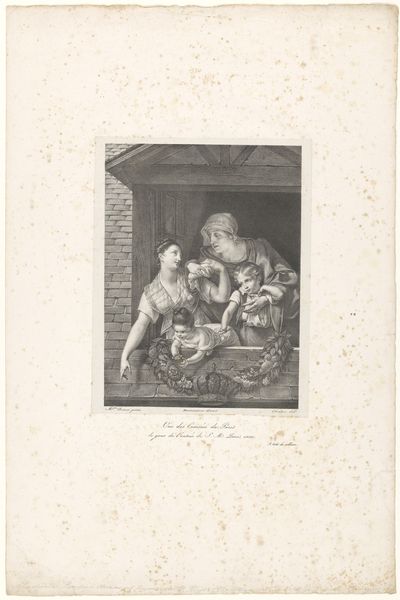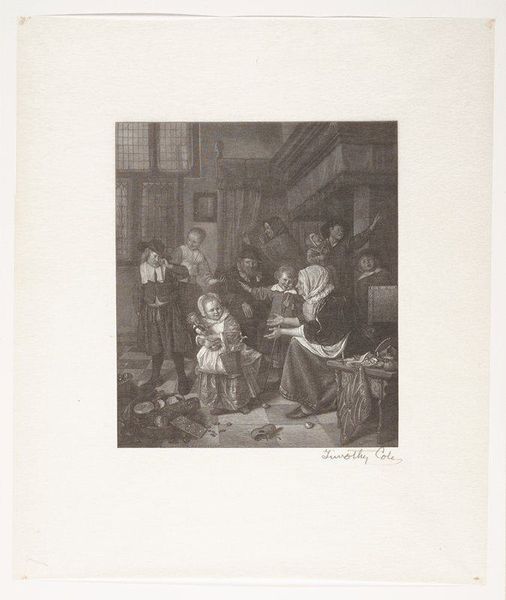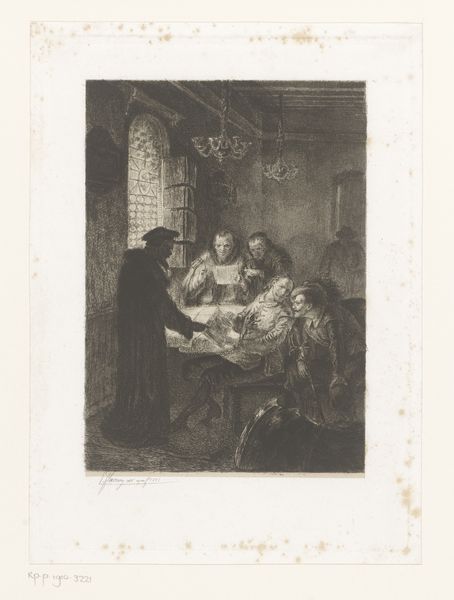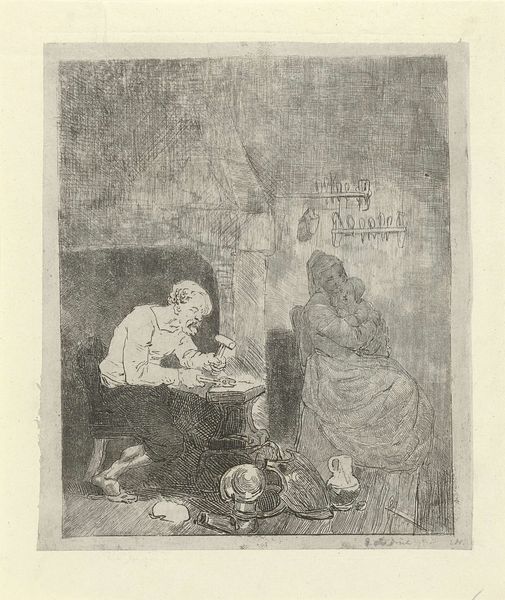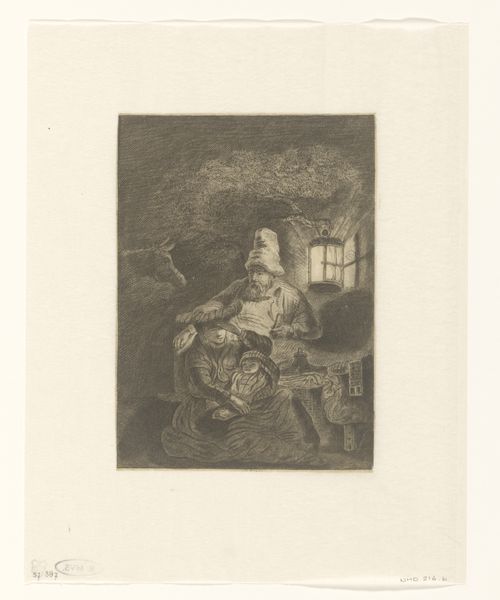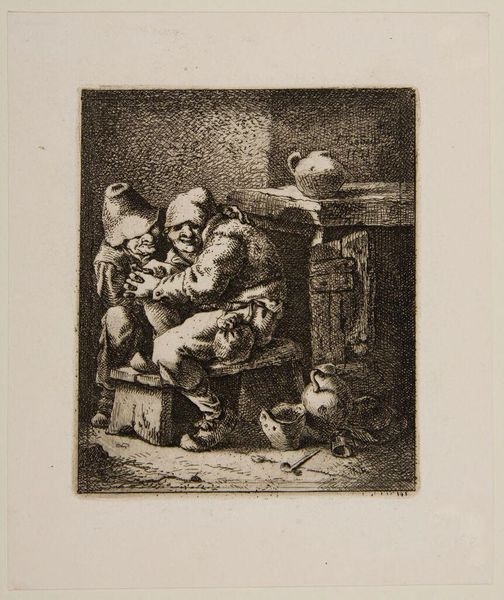
print, woodcut, wood-engraving, engraving
#
narrative-art
# print
#
figuration
#
woodcut
#
northern-renaissance
#
wood-engraving
#
engraving
Dimensions: 7 7/8 x 5 1/4 in. (20 x 13.34 cm) (image)11 1/8 x 8 9/16 in. (28.26 x 21.75 cm) (sheet)
Copyright: No Copyright - United States
Curator: This engraving is titled "Adoration of the Shepherds" created in 1903 by Timothy Cole, currently residing here at the Minneapolis Institute of Art. I'm struck by the medium—the print itself. What are your initial thoughts? Editor: Well, I find the dark tones quite intense. It's a relatively small print, isn't it? The woodcut style lends a somber mood to the familiar Nativity scene. What do you see when you look at it? Curator: Immediately, I consider Cole's labor. Think about the intense detail carved into the woodblock to achieve this tonal range! It speaks volumes about the late 19th, early 20th-century printmaking industry and the demands of the art market for reproductions. Isn't it interesting how a ‘fine art’ print is, at its core, a product of skilled labor and distribution networks? The reproductive nature allows art to exist in multiples for different consumption levels, and in a different social framework. Editor: That’s a really fascinating perspective! I was just thinking about the composition and symbolism, but the industrial aspect didn’t even occur to me. So, you're suggesting that the "Adoration" is less about the religious subject and more about the socio-economic conditions that enabled its production and circulation? Curator: Precisely! And let’s not forget the consumption aspect. Who was buying these prints? Were they for private devotion, or for display? Consider the social context surrounding this piece: mass production of art coinciding with a growing middle class eager to consume culture. We might consider this a democratization of the art market, too. How can the accessibility to artistic materials affect art and consumption in the world around us? Editor: I see what you mean. It's almost like Cole’s print is a document of its time, reflecting both artistic skill and industrial capabilities. Curator: Exactly! This work really encapsulates how art objects are so much more than their aesthetic qualities; they are embodiments of the processes, materials, and societal structures that bring them into being. Editor: This has completely changed how I view this artwork. Thank you!
Comments
No comments
Be the first to comment and join the conversation on the ultimate creative platform.
